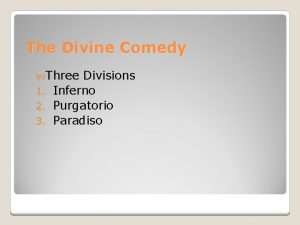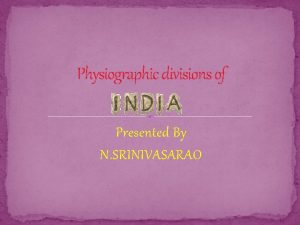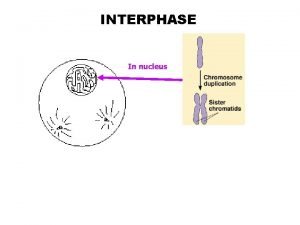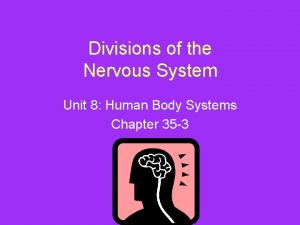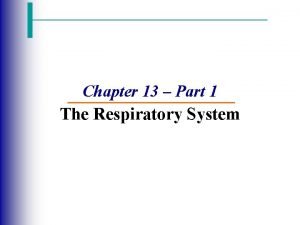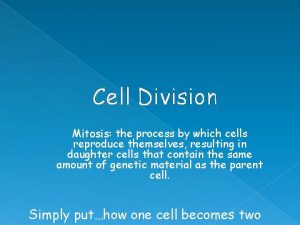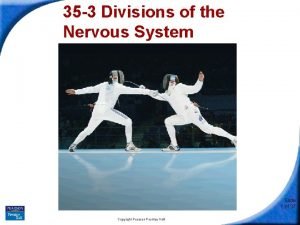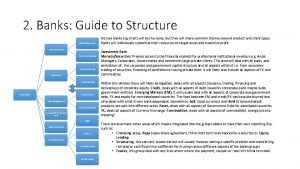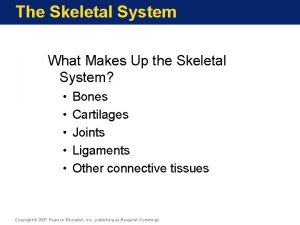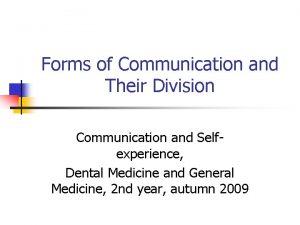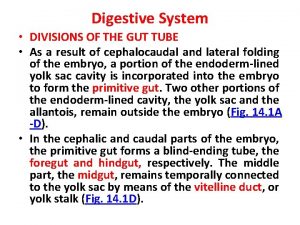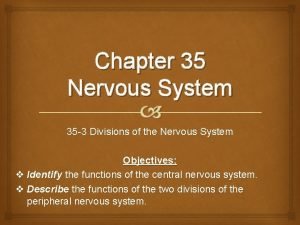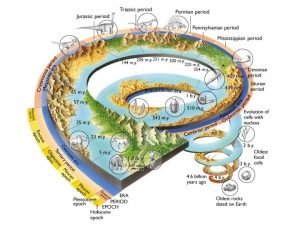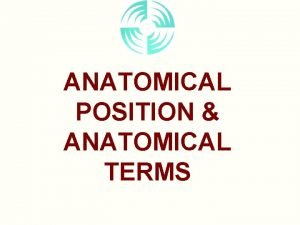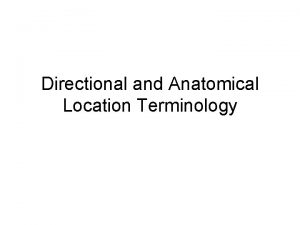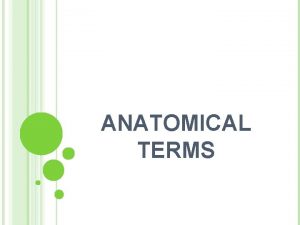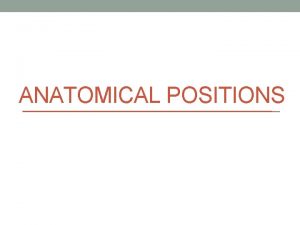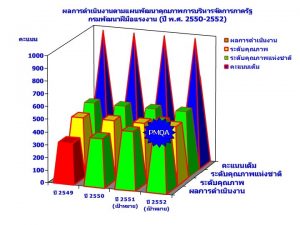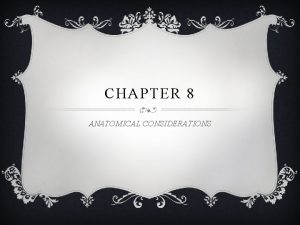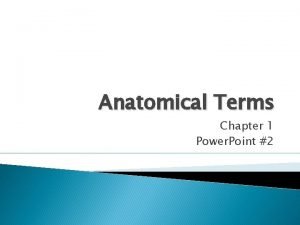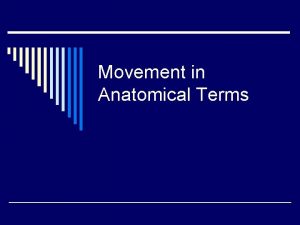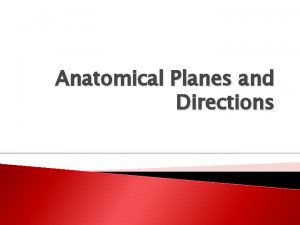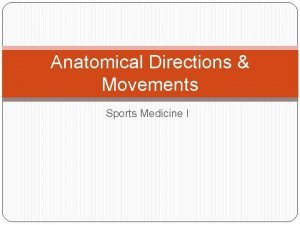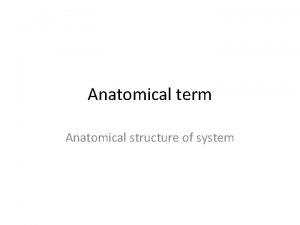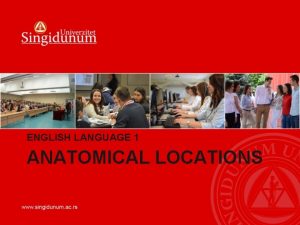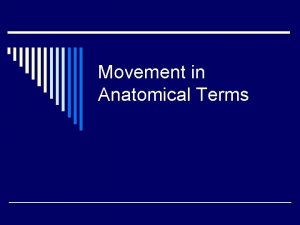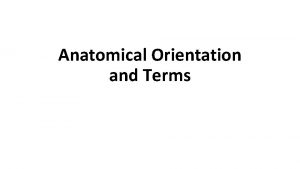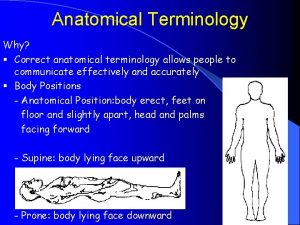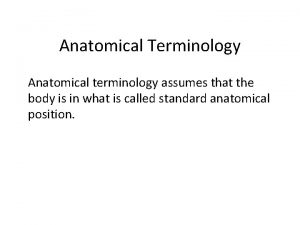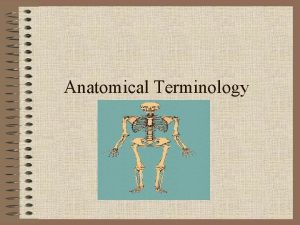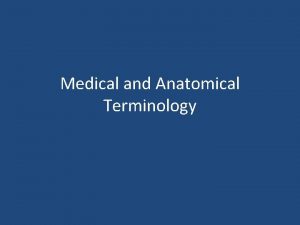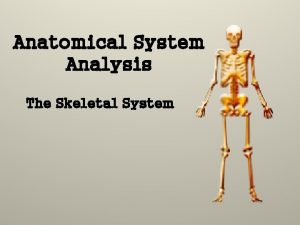Self Assessment Chapter 11 Anatomical Divisions of the































- Slides: 31

Self Assessment Chapter 11

Anatomical Divisions of the Nervous System • Divided anatomically into _________(____) and ________(____) (Figure 11. 1): © 2016 Pearson Education, Inc.

Anatomical Divisions of the Nervous System • Divided anatomically into central nervous system (CNS) and peripheral nervous system (PNS) (Figure 11. 1): • CNS – includes brain and spinal cord • Brain – made up of billions of nerve cells or neurons; protected by bones of skull • Spinal cord begins at foramen magnum and continues through vertebral foramina of first cervical to first or second lumbar vertebra • Made up of millions of neurons; much fewer than brain • Enables brain to communicate with most of body below head and neck © 2016 Pearson Education, Inc.

Anatomical Divisions of the Nervous System • PNS – consists of all nerves in body outside protection of skull and vertebral column • Nerves consist of axons of neurons bundled together with blood vessels and connective tissue; carry signals to and from CNS; classified based on origin or destination • ___pairs of nerves traveling back to or from brain; called cranial nerves • ____ pairs of nerves traveling back to or from spinal cord; called spinal nerves © 2016 Pearson Education, Inc.

Anatomical Divisions of the Nervous System • PNS – consists of all nerves in body outside protection of skull and vertebral column • Nerves consist of axons of neurons bundled together with blood vessels and connective tissue; carry signals to and from CNS; classified based on origin or destination • 12 pairs of nerves traveling back to or from brain; called cranial nerves • 31 pairs of nerves traveling back to or from spinal cord; called spinal nerves © 2016 Pearson Education, Inc.

Anatomical Divisions of the Nervous System • Divided anatomically into central nervous system (CNS) and peripheral nervous system (PNS) (Figure 11. 1): • CNS – includes _____ and ____ • Brain – made up of billions of nerve cells or neurons; protected by bones of skull • Spinal cord begins at foramen magnum and continues through vertebral foramina of first cervical to first or second lumbar vertebra • Made up of millions of neurons; much fewer than brain • Enables brain to communicate with most of body below head and neck © 2016 Pearson Education, Inc.

Anatomical Divisions of the Nervous System • Divided anatomically into central nervous system (CNS) and peripheral nervous system (PNS) (Figure 11. 1): • CNS – includes brain and spinal cord • Brain – made up of billions of nerve cells or neurons; protected by bones of skull • Spinal cord begins at foramen magnum and continues through vertebral foramina of first cervical to first or second lumbar vertebra • Made up of millions of neurons; much fewer than brain • Enables brain to communicate with most of body below head and neck © 2016 Pearson Education, Inc.

Functional Divisions of the Nervous System • Nervous system performs millions of tasks simultaneously every second; fall into three functional categories: _________, ______. © 2016 Pearson Education, Inc.

Functional Divisions of the Nervous System • Nervous system performs millions of tasks simultaneously every second; fall into three functional categories: sensory, integrative, or motor: • Sensory functions – gather information about internal and external environments of body; input is gathered by sensory or afferent division of PNS; further divided into somatic and visceral divisions; Sensory input from both divisions is carried from sensory receptors to spinal cord and/or brain by spinal and cranial nerves • Somatic sensory division – consists of neurons that carry signals from skeletal muscles, bones, joints, and skin; also transmits signals from organs of vision, hearing, taste, smell, and balance; sometimes called special sensory division • Visceral sensory division – consists of neurons that transmit signals from viscera (organs) such as heart, lungs, stomach, kidneys, and urinary bladder © 2016 Pearson Education, Inc.

Functional Divisions of the Nervous System • Integrative functions – analyze and interpret incoming sensory information and determine an appropriate response • 99% of integrated sensory information is subconsciously disregarded as unimportant • Remaining sensory stimuli that CNS does respond to generally leads to a motor response © 2016 Pearson Education, Inc.

Functional Divisions of the Nervous System • Motor functions – actions performed in response to integration; performed by motor or efferent division of PNS; can be further subdivided into somatic and autonomic divisions, based on organs that neurons contact • Motor/efferent division – consists of motor neurons that carry out motor functions; travel from brain and spinal cord via cranial and spinal nerves; organs that carry out effects of nervous system are commonly called effectors (Subdivisions are on next slide…) © 2016 Pearson Education, Inc.

Functional Divisions of the Nervous System • Motor division (continued): • Somatic motor division consists of neurons that transmit signals to skeletal muscle; under voluntary control (aka voluntary motor division) • Autonomic nervous system (ANS) or visceral motor division • Consists of neurons that carry signals to thoracic and abdominal viscera; critical for maintaining homeostasis of body’s internal environment • Regulates secretion of certain glands, contraction of smooth muscle, and contraction of cardiac muscle in heart; involuntary (aka involuntary motor division) © 2016 Pearson Education, Inc.

Neurons • Each neuron has only one axon or nerve fiber that can generate and conduct action potentials; axon may have following distinct regions • ______– region where axon originates from cell body • ______– branches that extend from main axon • ______ – small branches that arise from axon and axon collaterals near where these extensions end • _____or synaptic bulbs – arise from telodendria; components that communicate with a target cell © 2016 Pearson Education, Inc.

Neurons • Each neuron has only one axon or nerve fiber that can generate and conduct action potentials; axon may have following distinct regions • Axon hillock – region where axon originates from cell body • Axon collaterals – branches that extend from main axon • Telodendria – small branches that arise from axon and axon collaterals near where these extensions end • Axon terminals or synaptic bulbs – arise from telodendria; components that communicate with a target cell © 2016 Pearson Education, Inc.

Neurons Figure 11. 5 Neuron structure. © 2016 Pearson Education, Inc.

Neurons • ______ – plasma membrane that surrounds axon and its cytoplasm or ______ • Substances may travel through axoplasm using one of two types of transport, which are together termed axonal transport or flow • Slow axonal transport – transports substances like cytoskeleton proteins from cell body through axon at a rate of 1– 3 mm/day • Fast axonal transport – requires motor proteins and consumes ATP; vesicles and membrane-bound organelles travel more quickly back toward (retrograde transport) or away from (anterograde transport) cell body at a maximum rate of 200 mm/day and 400 mm/day respectively © 2016 Pearson Education, Inc.

Neurons • Axolemma – plasma membrane that surrounds axon and its cytoplasm or axoplasm • Substances may travel through axoplasm using one of two types of transport, which are together termed axonal transport or flow • Slow axonal transport – transports substances like cytoskeleton proteins from cell body through axon at a rate of 1– 3 mm/day • Fast axonal transport – requires motor proteins and consumes ATP; vesicles and membrane-bound organelles travel more quickly back toward (retrograde transport) or away from (anterograde transport) cell body at a maximum rate of 200 mm/day and 400 mm/day respectively © 2016 Pearson Education, Inc.

Neurons • Neurons have three main functional regions: • ______– includes dendrites and cell body • ______– includes axon • _______– includes axon terminal © 2016 Pearson Education, Inc.

Neurons • Neurons have three main functional regions: • Receptive region – includes dendrites and cell body • Conducting region – includes axon • Secretory region – includes axon terminal © 2016 Pearson Education, Inc.

Neurons • Neurons can be classified according to structural features into 3 groups (Table 11. 1): • ________– with a single axon and multiple dendrites, make up over 99% of all neurons • _________– with one axon and one dendrite and a cell body between them; found in eye and olfactory epithelium in nasal cavity • _________– have only one fused axon that extends from cell body and divides into two processes: one process carries sensory information from sensory receptors to cell body; other process carries sensory information from cell body to spinal cord; sensory neurons that carry information related to pain, touch, and pressure © 2016 Pearson Education, Inc.

Neurons • Neurons can be classified according to structural features into 3 groups (Table 11. 1): • Multipolar neurons – with a single axon and multiple dendrites, make up over 99% of all neurons • Bipolar neurons – with one axon and one dendrite and a cell body between them; found in eye and olfactory epithelium in nasal cavity • Pseudounipolar neurons – have only one fused axon that extends from cell body and divides into two processes: one process carries sensory information from sensory receptors to cell body; other process carries sensory information from cell body to spinal cord; sensory neurons that carry information related to pain, touch, and pressure © 2016 Pearson Education, Inc.

Neurons • Neurons can also be classified into three functional groups (Table 11. 1): • ______or afferent neurons – carry information toward CNS; neuron cell bodies in PNS receive information from sensory receptors and relay information via axons to brain or spinal cord; usually pseudounipolar or bipolar • _______ or association neurons – relay information within CNS between sensory and motor neurons; make up most of neurons in body; multipolar, communicating with many other neurons • ______or efferent neurons – carry information away from cell body in CNS to muscles and glands; mostly multipolar © 2016 Pearson Education, Inc.

Neurons • Neurons can also be classified into three functional groups (Table 11. 1): • Sensory or afferent neurons – carry information toward CNS; neuron cell bodies in PNS receive information from sensory receptors and relay information via axons to brain or spinal cord; usually pseudounipolar or bipolar • Interneurons or association neurons – relay information within CNS between sensory and motor neurons; make up most of neurons in body; multipolar, communicating with many other neurons • Motor or efferent neurons – carry information away from cell body in CNS to muscles and glands; mostly multipolar © 2016 Pearson Education, Inc.

Neurons • Specific neuron components group together: • CNS: • _______ – clusters of neuron cell bodies • _______– bundles of axons • PNS: • ______– clusters of neuron cell bodies • ______– bundles of axons © 2016 Pearson Education, Inc.

Neurons • Specific neuron components group together: • CNS: • Nuclei – clusters of neuron cell bodies • Tracts – bundles of axons • PNS: • Ganglia – clusters of neuron cell bodies • Nerves – bundles of axons © 2016 Pearson Education, Inc.

Neuroglia • _____ or _____cells not only provide structural support and protection for neurons but also maintain their environment (Figures 11. 6, 11. 7) • Able to divide and fill in space left behind when a neuron dies; form of each type of ____cell is specialized for its function, another example of the Structure-Function Core Principle © 2016 Pearson Education, Inc.

Neuroglia • Neuroglia or neuroglial cells not only provide structural support and protection for neurons but also maintain their environment (Figures 11. 6, 11. 7) • Able to divide and fill in space left behind when a neuron dies; form of each type of neuroglial cell is specialized for its function, another example of the Structure-Function Core Principle © 2016 Pearson Education, Inc.

Neuroglia • Neuroglia or neuroglial cells (continued) • 4 types reside in CNS: • • ________ • 2 types reside in PNS: • __________ © 2016 Pearson Education, Inc.

Neuroglia • Neuroglia or neuroglial cells (continued) • 4 types reside in CNS: • • Astrocytes Oligodendrocytes Microglia Ependymal cells • 2 types reside in PNS: • Schwann cells • Satellite cells © 2016 Pearson Education, Inc.

Neuroglia 2016 CNS. Pearson Education, Inc. Figure 11. 6 Neuroglial cells of©the

Neuroglia 2016 PNS. Pearson Education, Inc. Figure 11. 7 Neuroglial cells of©the
 Realself vs ideal self
Realself vs ideal self Unilever 5 divisions
Unilever 5 divisions Chapter 13 the respiratory system
Chapter 13 the respiratory system Three divisions of comedy
Three divisions of comedy Abdominal divisions
Abdominal divisions Physiographic divisions of india
Physiographic divisions of india Oceanic divisions
Oceanic divisions Oceanic divisions
Oceanic divisions Diploid cell
Diploid cell Investment bank divisions
Investment bank divisions Where are loins on a human
Where are loins on a human Traub's area surface anatomy
Traub's area surface anatomy 8 divisions of the nervous system
8 divisions of the nervous system Labelled diagram of a tooth
Labelled diagram of a tooth Alveolar duct
Alveolar duct How do you know
How do you know 35-3 divisions of the nervous system
35-3 divisions of the nervous system Investment bank hierarchy
Investment bank hierarchy Figure 6-4 the skeleton axial and appendicular divisions
Figure 6-4 the skeleton axial and appendicular divisions Figure 6-4 the skeleton axial and appendicular divisions
Figure 6-4 the skeleton axial and appendicular divisions Divisions of the nervous system
Divisions of the nervous system Earth science
Earth science Nasa divisions
Nasa divisions Hosa competitive event guidelines
Hosa competitive event guidelines Division of communication
Division of communication Figure 6-4 the skeleton axial and appendicular divisions
Figure 6-4 the skeleton axial and appendicular divisions Foregut midgut hindgut divisions
Foregut midgut hindgut divisions 35-3 divisions of the nervous system
35-3 divisions of the nervous system 4 divisions of geologic time
4 divisions of geologic time Dividing head parts
Dividing head parts Divisions of family practice
Divisions of family practice Divisions of biopsychology
Divisions of biopsychology



